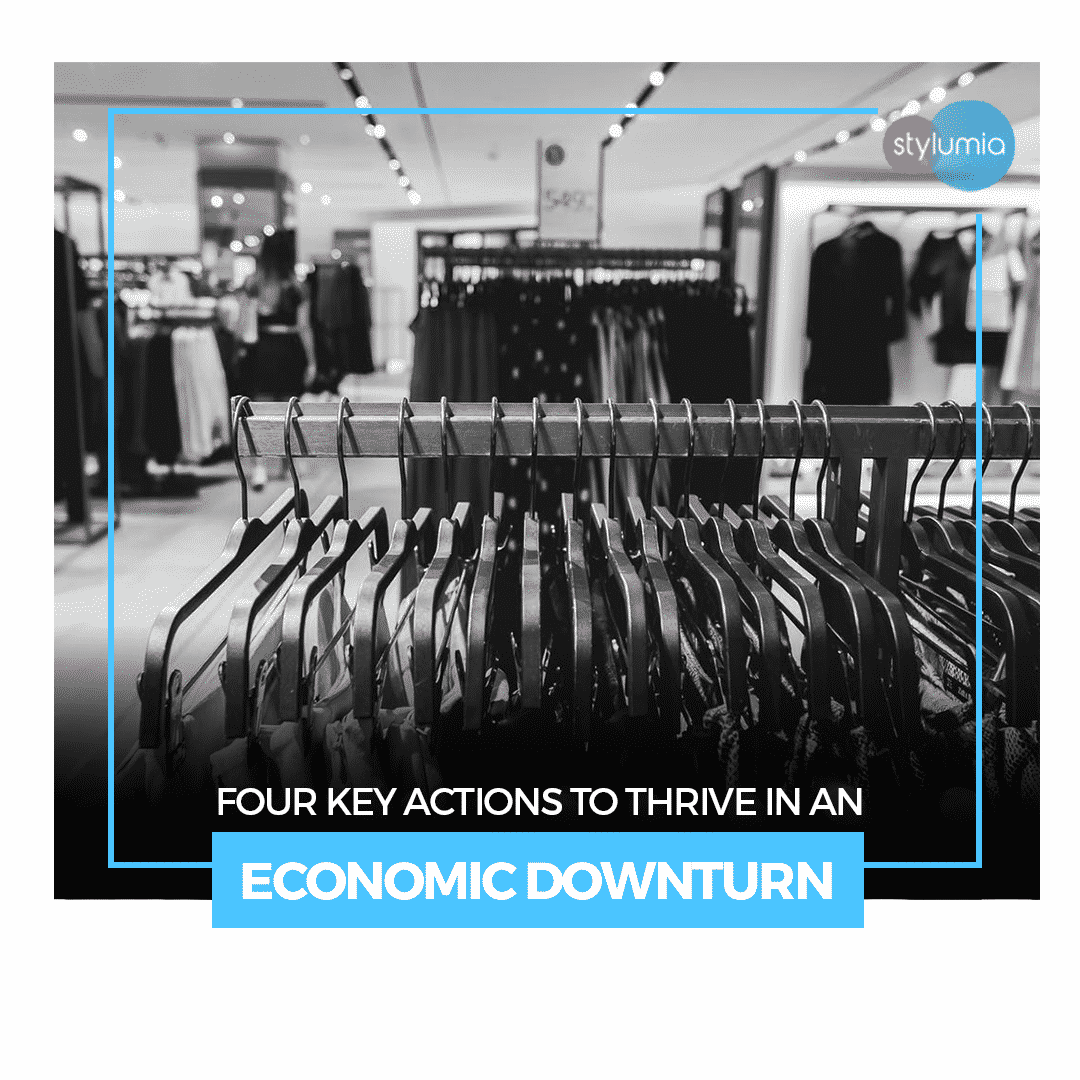Four Key Actions To Thrive In An Economic Downturn

I’ve heard there’s going to be a recession. I’ve decided not to participate.
Walt Disney

We are witnessing a lot of discussions, around Brexit in the UK, China’s economic slowdown, Germany’s recessionary trend, drop in India’s economic outcomes, to name a few. International Monetary Fund’s (IMF) chief Kristalina Georgieva recently said, “Global economy must be ready for a downturn”.
Going with the saying, “Forewarned is Forearmed”, in this edit, we look at how to assess the economic situation, key actions that any organization can take proactively, to not only survive but also thrive in a slowing economy.
How to assess your Economic Situation?
Economists say that a country is in a recession if there have been two consecutive quarters of decline in economic growth, as reflected by Gross Domestic Product (GDP).
It is very important to anticipate the economic situation that reacting to it. GDP is a lag indicator. The three factors that you can use to predict an economic downturn.
#1 The ISM Manufacturing Index (USA) or a similar one in your country. An index below 50 is a clear sign of recession. Sharp ISM manufacturing index reductions usually precede a recession. The trend of the ISM index as of now is in the graph below with the index reaching 2016 levels for the first time. (Lead Indicator)

#2 Fed’s interest rate (Lead Indicator) Your country’s federal bank’s interest rate. Interest rates move up and down with the economic status, the drop in the last quarter is indicating a direction.

#3 Unemployment rate (Lag Indicator) The trend in the US on this account is healthy with a downward trend. This is an area the US government seems to be actively contributing. This could also be due to non-manufacturing interventions.

You may look at similar statistics for your country and all of these are readily available on a google search. This is to ensure that you look at reality and not based on someone’s viewpoint, which may be biased at times.
A recession or a downturn can happen at any level, continent, country, state, industry segment or household. You can look at the three factors above for your house, industry, country and arrive at if there is a slowdown. The more relevant question is, how can a brand or retailer prepare and thrive in the event of a slowdown?
What are the things to do in the event of a slowdown?
It is always great to learn from our past. In a study by Bain Consulting, of past recessions, the top 10% of the companies saw their profit and sales grow over 10% of their competitors.
The difference-maker between the thrivers and the rest is “Preparation”. The fundamental is the company needs to be flexible and ready to adjust. Here are the four things to do as soon as you sense a slowdown or a recession.
#1 Reduce Debt + Increase Cash (Deleverage)
There is sufficient research from past slowdowns (In a 2017 study, Xavier Giroud (of MIT’s Sloan School of Management) and Holger Mueller (of NYU’s Stern School of Business) that the companies who suffer the most are the ones with the highest amount of debt. It is important to reduce debt and increase cash. The more debt you have, the more cash you need to pay off interest and principal. During these times, less cash is coming into the organization.
This is the time to be resourceful than having more resources.
#2 Focus on the How of Decision Making
A company’s performance during and after a slowdown depends, not only on the what of decision making but also on who makes the decisions. Researchers Nicholas Bloom and Brian Lucking (of Stanford), and John Van Reenen (of MIT) examined how organizational structure affects a company’s ability to navigate downturns. They concluded“Decentralisation was associated with relatively better performance for firms or establishments facing the toughest environment during the crisis”
Decentralized companies have a better ability to adapt to changing conditions. They are also more aggressive in adjusting their product mix to changing demand. Another way to decentralize is to empower people with data. This way, data drives most of the decisions than someone’s view.
#3 Reinvent Cost Reduction
Instead of traditional cost-cutting, bring in performance-based pay, or smart provision of partially compensated leaves to those whose areas show some excess in the short term like what Honeywell did in 2008. They bounced back stronger than the rest of their peers.
#4 Invest in Technology
In a 2018 paper, Brad Hershbein (of the Upjohn Institute for Employment Research) and Lisa B. Kahn (of the University of Rochester) conclude that“Investing in Technology can make your business more transparent, more flexible, and more efficient. According to Katy George, a senior partner at McKinsey, the first reason to prioritize digital transformation ahead of, or during a downturn is that improved analytics can help management better understand the business, how the recession is affecting it, and where there’s potential for operational improvements.”
George’s view is that companies that have already invested in digital technology, analytics, and agile business practices may be better able to understand the threat they face and respond more quickly. As we’ve seen, recessions can create wide and long-standing performance gaps between companies. Research has found that digital technology can do the same. Companies that have neglected digital transformation may find that the next recession makes those gaps insurmountable. Credit: Harvard Business Review. HBR’s 10 Must-Read on Managing in a Downturn
Fashion businesses are faced with challenges that are a lot more complex considering the lead time between when the commits are made and when the demand comes in for those products. This creates a need for businesses to be a lot more proactive.
Stylumia is created to enable fashion brands and retailers in all of the four key areas,
#1 Increase Cash: Improve productive cash by removing/reducing wastage in the product creation and forecast process in both quantity and quality. We have shown cash improvements of over 10-25% using our demand-driven market intelligence and prediction solutions.
#2 Decision Making: Bring transparency of both the consumer demand data outside the organization and also create visibility of what is happening to products made inside the organization. We enable the entire organization to make data-informed decisions transcending the organization structure.
#3 Reinvent Cost Reduction We enable cost reduction by helping you produce more of what your customers want and less of what they do not want. Our clients have seen absolute full-price sell-through improvements to the magnitude of 6-8% over 2-seasons for implementation.
#4 Invest in Relevant Technology: We enable you to invest in outcome-driven technology solutions with cutting edge AI, computer vision and machine learning which have demonstrated business impact.



